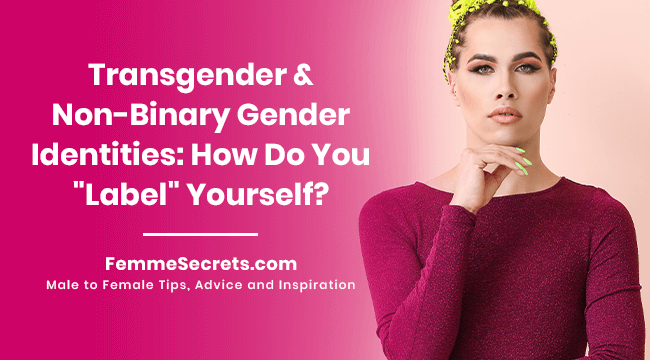
Choosing the right words to describe your gender identity can feel tricky. For transgender and non-binary people, finding a label that fits is personal and important.
Using respectful language matters. Outdated or offensive terms can hurt, so it’s okay to set boundaries about how others address you.
At the same time, you are more than a label. What matters most is how you choose to define yourself, no matter where you are on the gender spectrum.
Do you have a label that feels right – like crossdresser, transgender woman, non-binary, or something else?
I’d love to hear your thoughts, so let’s continue the conversation in the comments below!
Love,
Lucille

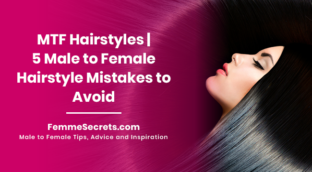
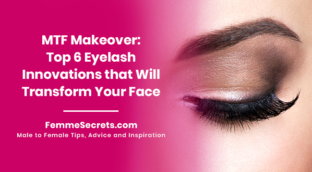
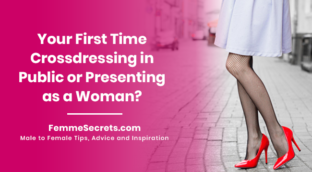
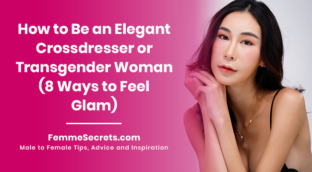

I really hate labels but seems now days everything has a label. For years I was scared to be me i secretly dressed so I was then a cross dresser. Now that I’m opening up and allowing the real me to be free im a women. That’s how I feel and makes me happy
Unlike some of the people who replied, I’m actually convinced that labels do, indeed, have some value. More specifically, they aid therapists and medical doctors to help people out. They are a diagnosis of a condition, and, once it has been established, the process of cure can begin. Because of that, I find that the labels are important.
Let me give you a simple, stupid, example. You have a running nose, you’re sneezing, have some fever, some muscle aches, and feel lousy. You can just say, ‘I’ve got a cold’ and try to get some off-the-counter medicine to get rid of it. But in reality, these symptoms can be at least four different diseases: rhinoviritis (‘common cold’), influenza, sinusitis, or rhinitis. Each is treated in slightly different way. Getting a shot of the ‘flu vaccine will not prevent rhinoviritis, which is far, far more common, and has practically the same symptoms — just slightly milder. But the ‘flu kills, while rhinoviritis doesn’t. Nothing that you use against rhinoviritis or influenza will help you with sinusitis or rhinitis, and the reverse is also true. So… labels… yes, they are confusing. But get the right one, and you’ll get the right treatment. If what matters is the treatment, then it’s important to be able to describe your condition adequately.
If you do not require any sort of treatment whatsoever, then the labels are not so important. However, most gender dysphoric individuals will very likely need some help in dealing with depression, anxiety, body dysphoria, and gender dysphoria. For some, transition is the best choice and the only one that will actually provide a ‘cure’ — in this case, of course, getting their body aligned with their inner self-image. For others, the gender dysphoria is not so strong as to require a full transition. A partial transition might be more appropriate; or no transition at all. For some, the inner female self-image requires physical manifestation to provide some reduction of the symptoms — that’s when those individuals cross-dress. For others, physically manifesting the inner self-image is not required, and all it takes is a different manifestation (like, for instance, artistic expression in writing, drawing or painting); these people are crossdreamers. Sometimes, you go from crossdreaming to crossdressing to transition; more often, gender dysphoric individuals will stop at the stage that provides them more comfort. But figuring out what that stage is does, indeed, require some labeling — or therapists and doctors will not know what to do about the issue!
To make things confusing, we also get labels from the community itself, and from the porn industry. And to add to the confusion, the labels change according to cultural and national boundaries.
Let me give you the example of my own country, Portugal. Here, the technical terms are very simple. You either are gender dysphoric or you’re not. If you are, your gender dysphoria might require transition (full or partial — by ‘partial’ means that it doesn’t forcefully include hormonal changes and/or genital surgery). While officially diagnosed with a perturbation of gender identity, and taking steps to cure it via transition, you’re officially ‘transexual’. Once transition is completed, at whatever stage it’s more appropriate and comfortable, that person is designated by the gender they identify with. If they were MtF transexuals, they just become ‘women’. Not ‘transwomen’, nor ‘post-op transexuals’, nor anything like that. They are just ‘women’, and calling them anything else is actually discrimination and forbidden by law.
‘Crossdressing’ is just the act of wearing clothes of the opposite gender, but that is defined by who looks at those people, not what the person thinks about themselves. A gender dysphoric individual is not ‘crossdressing’, they are just wearing clothes appropriate to the gender they identify with. The same applies to genderfluid individuals, or even genderless/androgynous individuals, or even to those who are ‘bi-gender’. They are technically not ‘crossdressers’ because, for themselves, they are wearing the ‘correct’ clothes for the gender they currently identify with. Of course, society might label them differently, but this is how they see themselves.
There are exceptions. Someone who just dresses like the opposite gender they identify with, for deliberate reasons — mostly with a sexual intent — might use the label ‘crossdresser’ for that. Therefore, the label ‘crossdresser’, which in the 1990s just expressed the physical manifestation of one’s inner self-image as a woman, has, these days, acquired negative connotations of a sexual nature. These days, MtF ‘crossdressers’ tend to identify themselves as males who need to crossdress for sexual pleasure; they never stop being ‘male inside’ but might feel ‘girly’ for a while, which stimulates their sexual pleasure, and even induces them to find different sexual partners.
The term ‘transvestite’, in my country, just designates artists or performers on stage, who dress clothes of the opposite gender for entertaining purposes. There is no concept of gender identity associated with that particular individual. It’s an art form, not a gender issue. But different cultures view this differently. For instance, as I’ve written elsewhere, in Brazil a ‘transvestite’ is an individual who lives full time as woman but is not going through transition (but might — and often do — go through several body modifications, namely breast and hip augmentation). It would be the equivalent of the Thai ‘shemale’ or the US ‘pre-op transexual’. Needless to say, while Portugal and Brazil share a common language, this is a source of much confusion between both communities. A ‘crossdresser’ in Brazil is a ‘part-time transvestite’, and, in almost all cases, it has strong sexual connotations. As a result, those who label themselves transexuals, and who are just worried about their gender identity (and not about sexual partners), usually avoid the crossdressing/transvestite community.
So… besides getting medical help, labels are also important to define what community you’re most comfortable with. Sexual fetishists, for instance, are more comfortable by joining a community of similar-minded individuals, in private and safe locations, where they can enjoy the pleasure of sex as a woman, without being subjected to discrimination. Non-sexual crossdressers (i.e. those that don’t really dress in order to get sexual partners) might feel extremely uncomfortable in that very same environment. And MtF transexuals (i.e. gender dysphoric individuals) in transition will want to live their lives as real woman, among the real public, and do not wish to associate with the sexual fetishist community — even if, of course, they might have their sexual fantasies like everybody else (sexual fantasies are healthy! We all have ours!). It’s just that one thing is the gender dysphoria, the other thing are the sexual preferences. Keeping them apart might be hard for the individual, but it’s definitely almost impossible for the public-at-large: they see ‘gender dysphoria’ as mostly ‘sexual deviation’ (a paraphilia, if you wish), because, well, the vast majority of crossdressers are, indeed, sexual fetishists, and they tend to dominate all other communities — that’s what the public sees. The non-fetishists are a comparatively small minority which is mostly invisible to the public. No wonder that they are little understood and not so easily accepted.
So… this is a long comment. How would I label myself? In the 1990s, I would have never hesitated: to manifest physically my inner self-image as a woman, I need to dress as a woman. For the external world, therefore, I would be a crossdresser. It was easy to use that label in the 1990s.
I have such a low libido that I’m almost asexual, so it’s ironic that in the 2010s, by claiming to be ‘merely a crossdresser’, I actually place myself in the middle of the sexual fetishists! So, to describe my condition to the very few people I’ve been open with, I just say ‘I’m gender dysphoric’. I don’t mention how extreme my dysphoria is: that’s for the doctors to say. I would classify it as mild-average: enough to cause severe depression and anxiety attacks, but not serious enough to lead me to suicide. Although I have just very recently started to talk to gender therapists — I wish them to focus on the depression and anxiety, not on transition! — it’s hard to say how severe my case is, but I would say that it’s not severe enough to label me as ‘transexual’.
On the other hand, my life is way too complicated already. Transitioning would be just adding a pile of new worries and problems, mental and physical, to deal with. So, for me, transition would not be a ‘cure’, but just an incredibly more stressful and depressing event, and the result might be a better alignment between my mental self-image and my body, but at the cost of ruining what remains of my life. Do I seriously want to go through that? Definitely not at this stage.
So, ironically, I label myself as a ‘failed transexual’. Someone who is enough gender dysphoric to suffer from it (depression, anxiety, etc.) but not gender dysphoric enough to go through transition in order to get ‘cured’. In the mean time, I ‘crossdress’ as a form of easing the depression and anxiety and to get in touch, at least temporarily, with my inner self-image, and allow it to manifest fully in public. That’s what I tell my doctors.
In terms of community, I try to avoid the explicitly sexual fetishists (although I’m usually fine with the more moderate ones), and tend to bond with ‘true transexuals’ (those in transition) because we share so much of the same mindset. However, once they go through transition, they cut all their bonds with their past — and that also means that I, ‘merely a crossdresser’ and a ‘failed transexual’, will be left behind at some point. Interestingly enough, there are a lot of people like me — I’m not alone in this. But the group tends to shrink: as soon as conditions change, members of that group tend to go through transition after all, and that’s not an option for me, so I stay behind… waiting until a new member arrives. This happens constantly, to be honest.
Thank you Sandra, for a wonderful read. This really put’s it into perspective for Me. I agree with all you said here. Thank you. And I have learned a lot from reading all of this.
And Penny thank you for your insight into this also. A very good read from the both of you. It has really help me to understand myself more. And I thank you both. A really good read…
Thank you so much for your insightful comment, Sandra. I understand it perfectly, as I too am one of what I call the “lost generation” – those who grew-up before the internet, didn’t have resources (services or finances) available to them, who basically gave up hope, got married and became entwined with their communities. Then came hope with the internet, but they were already older, making full passing and social integration problematic, had limited potential for income and of course, they had too many family and community responsibilities to lose in transition or even to kill themselves. It’s about being perpetually caught between a rock and a hard place. So, we cope as best as we can and rationalize what would be the point of transitioning only to be a senior citizen, having missed all of the milestones in a woman’s life. But, the feelings never cease as everywhere you look everything in our societies are “genderfied.” BTW, I was always female on the inside, but was physically and emotionally forced by my parents to become a member of male society. It’s been so long, that I can’t imagine what life might be like functioning without my ingrained depression. Oh, and I like your term, “failed transsexual”. That really describes the feeling.
As transsexuals become more understood and treatments are initiated at younger ages where the young people are socialized completely, develop physically as their desired gender without having to backtrack and blend seamlessly into society, they will become more and more accepted, while the older ones like us will likely just die off as a historical artifact. I applaud the young for being so open about who they are and I salute the past generations for suffering through so much.
Aw Penny… that truly moved me, especially the last paragraph. Let’s just wish that we paved a way to a new generation which can live in a world which is a little bit better off!
The truth is that I’m actually surprised, in a very positive way, how society as a whole is now really enlightened in the way they deal with transexuality in infancy and early childhood. The whole concept of delaying one’s puberty in order to allow a person to make clear decisions about their future — without risks or harm to one’s health — would be absolutely unthinkable twenty years ago. We have come a long, long way!
I consider myself Transgendered. While I still present as male, due mainly to age and current employment as I am close to retirement, I consider myself more female than male. I am sure that once I retire I will present mostly as a woman and will be finally able to feel comfortable in my dress and feelings.
Barbara,
I could have written your comment for myself. I don’t know how much our plans differ, but we’re very close.
Susan,
I have a very supportive wife that has helped Barb to become. I know that there are times that she prefers to see the male me, Bruce, but accepts fully. I would just love to be in a position to find a small second home somewhere where we both like to go and only go there as Barb. Nobody there would know the male side of me and I could just be me.
Take care
I feel my self as trans women i want people should address me as women not in jokes but in resl
I am a discreet Crossdresser since my teens. Would love to wear Saree whole day when nobody is at home or out of town. Occassionaley I used to go out in a two wheeler very early in the morning with the saree over which I put on the shirt partly closed and with the helmet on to cover my moustached face and come back home. Used to roam around the house watering the plants when neighbours are stay put in their house.
I am simply a human, with all the beauty, grace, feminine (and some masculine) charm that it all comes with! I love myself and express it in ways that some may not like. That is not my worry- ’tis theirs. Beautiful clothes and a fab mani pedi (always) make me feel gorgeous and that’s what makes me happiest.
Transgender woman.
I have been going out dressed en femme in public less than a year and happy to say have so far had no derogatory encounters although several times asked how I would like to be addressed.
I am a Female. but Transgender woman
T-girl is ok. But no drag queens I am a not actress playing a female
Best answer ever. I am also transgender, but female is what I identify as.